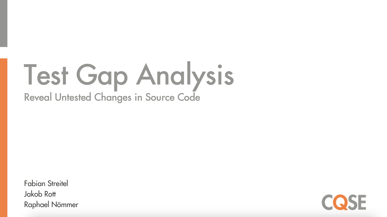Most errors in long-lived software occur in code areas that change a lot. To do things right, you have to make sure that no important changes go live untested. Test Gap analysis helps us to find untested changes.
After an introduction to Test Gap analysis (TGA), we present the experience that we have gained in recent years using TGA with customers and in our own development and answer the following questions: How can the quality of hotfix tests be assured? How can I determine during the iteration how thoroughly selected critical change requests or tickets have been tested? How does the test coverage of different test levels (unit test, integration test, acceptance test, user trampling test, etc.) compare to one another and which changes were not checked by any test level?
In addition, we present best practices and useful KPIs in continuous use and show the results of a cost-benefit analysis from many years of service at Munich Reinsurance Company. The workshop brings together several lectures that have received Best Presentation Awards at the German Testing Day, the Software Quality Days and the QS-Tag in recent years.
Agenda
- Test Gap analysis (TGA) in Research and Industrial Use
- Live Demonstration
- Benefit Analysis of TGA at Munich Reinsurance Company
Attendees' Voices
»An awesome experience and good knowledge about the tool.«
»All the sessions were equally informative. The theory & practical part connected together add the extra spice.«
Speakers
Fabian Streitel - Leads the Pilot Team at CQSE. Has successfully set up TGA with many customers.
Jakob Rott - Uses TGA every day in customer projects. Has heard a lot of excuses why things remained tested.
Raphael Nömmer - As part of the Pilot Team, he uses TGA successfully in customer projects every day.
The Workshop took place on October 19, 2022, 10:30-12:00 CEST in German.

